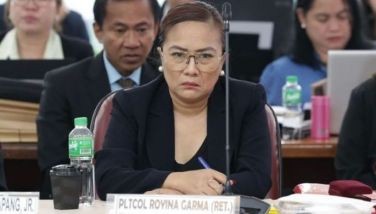BSP sees GIR hitting record $70 billion and BOP surplus of $8 billion
MANILA, Philippines - The Bangko Sentral ng Pilipinas (BSP) sees the country’s gross international reserves (GIR) hitting a new record level of $70 billion and the balance of payments (BOP) posting a surplus of $8 billion this year as foreign capital continues to flood emerging market economies including the Philippines.
BSP Governor Amando M. Tetangco Jr. said on the sidelines of the Year-End Philippine Economic Briefing entitled “Daylight in the Philippines: Accelerating Progress” that monetary authorities expect a stronger external payments position with the GIR hitting a new record led of between $68 billion and $70 billion and the balance of payments (BOP) surplus ranging from $6 billion to $8 billion this year.
“The projected BOP surplus for this year is about $6 billion to $8 billion this year and the GIR would be $68 billion to $70 billion by the end of this year. The details are still being worked out and we will give this to you as soon as they become available,” Tetangco told reporters.
The BSP was originally looking at a GIR level of $63 billion to $64 billion and a BOP surplus of $2 billion for 2011. The GIR is the sum of all foreign exchange flowing into the country while the BOP refers to the difference of foreign exchange inflows and outflows on a particular period and represents the country’s transactions with the rest of the world.
Latest data released by the BSP showed that the country’s GIR climbed to a new all-time high of $63.61 billion in January on the back of higher government borrowings as well as the central bank’s robust foreign exchange operations and higher income from overseas investments. Last month’s foreign exchange reserves was about two percent higher than the December level of $62.371 billion and 39.5 percent higher than the $45.591 billion recorded in January last year.
On the other hand, the country’s BOP surplus more than doubled to hit a new record level of $14.4 billion last year from $6.42 billion in 2009 amid the strong recovery of the export sector as well as robust remittances from Filipinos abroad.
Tetangco added that the country’s strong external payments position would be supported by the strong inflows of foreign capital particularly foreign direct investments (FDIs) into emerging markets including the Philippines due to the fragile growth in advanced economies led by the US, Japan, and other European countries.
“The direction of the FDI (inflow) is that it will be likely be higher than the original projection,” he said.
Total FDI inflows plunged 36.5 percent to $1.07 billion in the first 10 months of last year from $1.686 billion in the same period in 2009 as investors remained spooked by the fragile economy recovery in advanced economies. Equity placements plunged by 76 percent to $472 million while withdrawals surged 64 percent to $269 million.
However, the inflow of foreign portfolio investments or “hot money” hit a new record level of $4.61 billion last year or nearly 12 times the 2009 level of $388.02 million as funds continued to flood emerging markets including the Philippines. Inflows more than doubled to $12.997 billion last year from $6.335 billion in 2009 as investments in PSE-listed shares surged by 75 percent to $8.5 billion from $4.8 billion.
The BSP chief pointed out that 2010 was an exceptional year for the Philippines as advanced economies struggled to recover from the global slowdown while the country’s economy sustained its vitality, drawing strength from solid macroeconomic fundamentals and stable banking system.
- Latest
- Trending






























